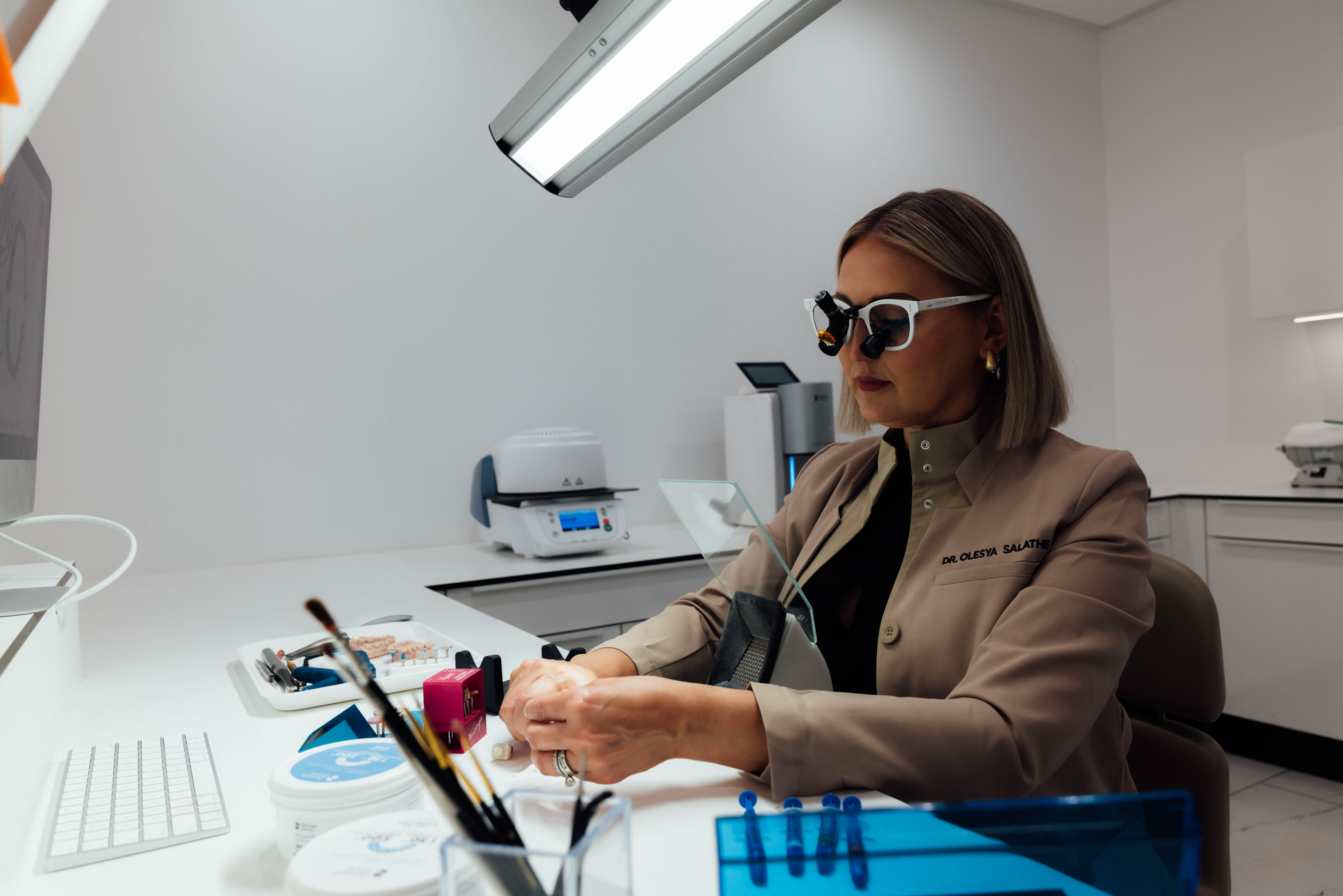
Dr. Olesya Salathe: Leading on Dental Workforce Solutions and through the Oregon Board of Dentistry
At eight years old, Dr. Olesya Salathe immigrated with her family to the United States from the Soviet Union, where dentistry was a largely female profession and one that interested her from a young age. In high school, Dr. Salathe worked at a dental office where she was primarily responsible for clean-up and janitorial work. Today, she is the co-owner of that dental office where she and her youngest sister Olya Belko, an EFDA/EFODA, have worked together for 14 years. In addition to the family practice, she and her sister Jen Spooner built an aesthetic medical and dental practice from the ground up. She also serves on a number of boards for dental organizations, including the ODA’s Board of Trustees, the Oregon Board of Dentistry and the American Academy of Clear Aligners.
“When I was in second grade, someone came into our school and spoke about dentistry, and I was immediately interested,” said Dr. Salathe. “I like people, and I’ve always liked science, so I feel like dentistry is very interesting to me. I was always an artist and drawing as a child. Every day, I get to make something physically with my hands and get to connect with a human while digging into the science/medicine side so it’s the best of all those worlds.”
Dr. Salathe’s commitment to community service and volunteer work is exemplified in the partnerships through both her private dental practice in Molalla and the second location she owns in West Linn that is part medical practice focused on aesthetics and wellness.
“Our office in Molalla is very involved with schools, local churches and fundraisers for our community,” said Dr. Salathe. “Our West Linn practice includes patients coming for a unique experience or more complex procedures, so we get to host a lot of trainings on the medical side. On the dental side, we’re the only practice in Oregon that’s fully Dentsply Sirona integrated, so we get to host a lot of dental practices.”
In addition to her leadership work in her community and among other dental and medical practitioners, Dr. Salathe serves on the Board of Trustees for the Oregon Dental Association, which the service-minded dentist has been involved with since the beginning of her career.
With a heightened interest in the workforce challenges facing dental practices, Dr. Salathe jumped at the opportunity to serve as the ODA’s liaison to the Oregon Board of Dentistry, which serves as the licensing board for dentistry in Oregon.
“I felt like we really needed to build bridges with hygienists and assistants post-covid,” said Dr. Salathe. “The workforce package was happening at the time and there were a lot of opinions about how we could solve this crisis.”
She soon transitioned from ODA liaison to serving as a member of the Board of Dentistry, a governor appointed position.
“Of the three new board members who joined at the same time, I was the dentist, one was a hygienist, and the public board member was a dental assistant,” said Dr. Salathe. “All three of us newbies were female, and it fit perfectly in that we are wanting to build these bridges and work together to solve these challenges.”
Dr. Salathe is committed to seeing the dental profession move forward and use creative solutions to solve workforce challenges as it relates to auxiliary staff, whether that means increasing recruitment opportunities or offering dental assistants and hygienists additional training to utilize their full scope of practice.
“We’re known for our diversity and thinking outside the box in the Pacific Northwest,” said Dr. Salathe. “A lot of dentists are asking their assistants to do more. They are having conversations about how their scope can play into workforce challenges and what things our auxiliary staff members can do to help deliver care.”
Dr. Salathe says she believes in education and that if we have the right pathways for education for hygienists and assistants, they can be more qualified to deliver care. She also argues that many hygienists and assistants are not fully utilizing their scope in many settings, for example, restorative licenses have been available for assistants for many years, but many practices are not using them.
“I had an opportunity to work for PCC as a clinical instructor to a group of Willamette Dental assistants,” said Dr. Salathe. “These assistants had been working in the field with patients for maybe 10-20 years, so they understood the role of hygienists and patient care and knew how to maneuver around a patient. A lot of these assistants have been delivering care for a long time and to see them doing these fillings and procedures, they understood what was expected of them and it opened my mind to the idea that, with the right training and qualifications and standards, we might be able to expand care through certain dental assistants.”
From the medical side of her practice, Dr. Salathe has seen the differences in scope for a medical assistant compared to a dental assistant, or a Registered Nurse compared to a dental hygienist and recognizes that medical staff can do more to support patients with the same amount of training and investment than auxiliary dental staff can.
“I believe that as leaders in our dental practices we should be open to helping our team members grow,” said Dr. Salathe.
In addition to conversations about how to best serve patients through highly trained dental assistants and hygienists, Dr. Salathe is a leader in integrating digital planning and scanners into her practice and is excited about the future of dentistry.
“I think this is the best time to be in dentistry,” said Dr. Salathe. “We have amazing technologies and ways to deliver care. Even in the last four years, we have so much more at our fingertips now that gives us the ability to change the patient experience. It’s a very exciting time to be in dentistry.”

